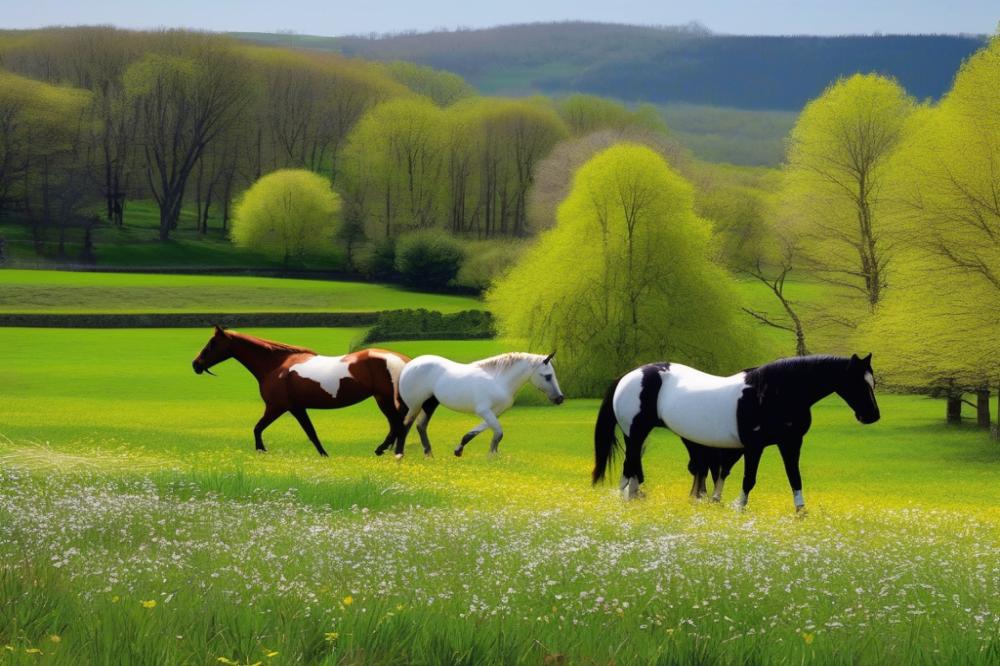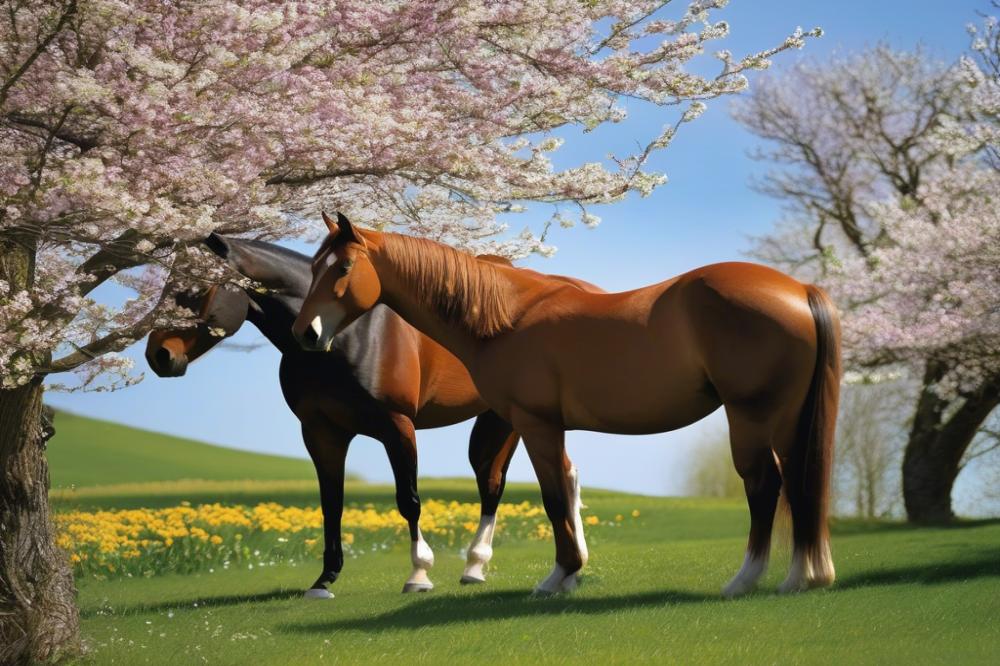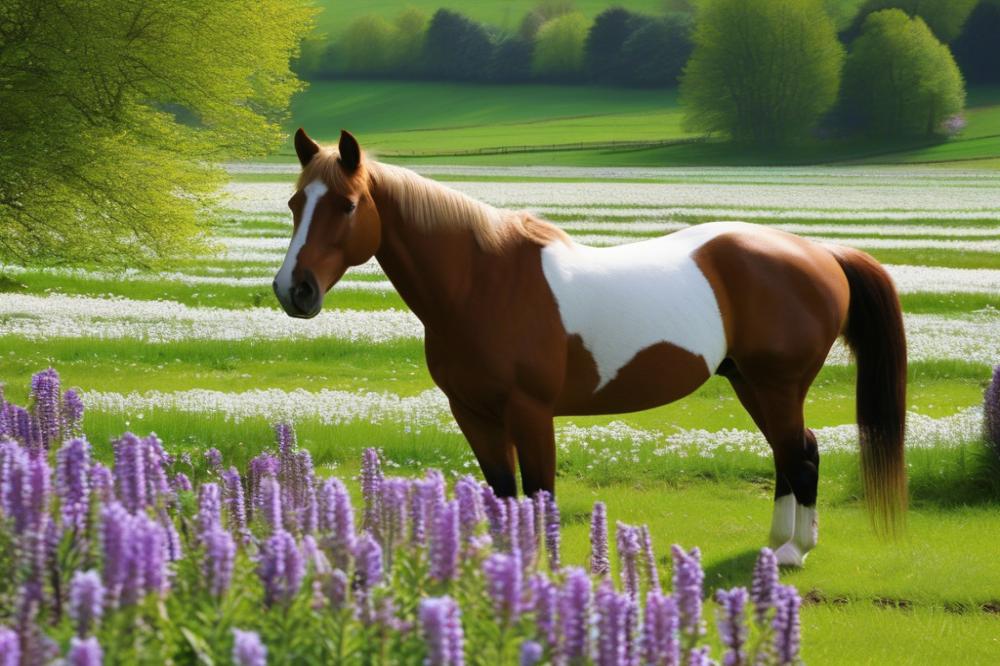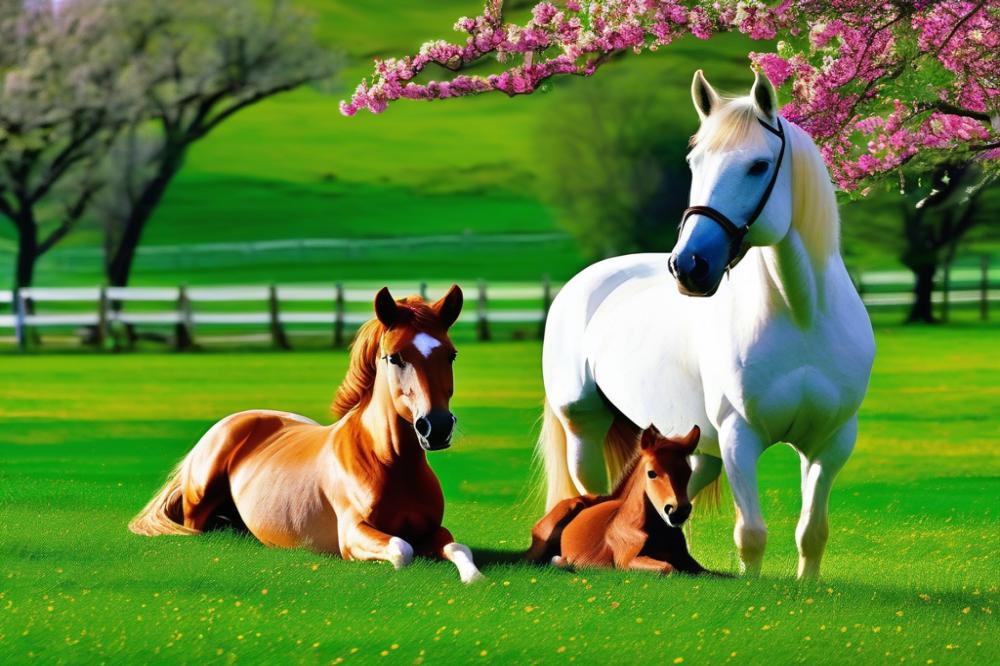Introduction
seasonal breeding plays a vital role in the reproductive strategies of horses. These animals exhibit specific breeding patterns that align with certain times of the year. Understanding this phenomenon is crucial for horse breeders who aim to maximize reproductive success. Most horse breeds become active in their reproductive cycles during warmer months. This behavior is not merely a random occurrence; it is a response to environmental cues.
Factors such as daylight length, temperature, and food availability influence when horses breed. As spring approaches and daylight increases, mares typically enter estrus more frequently. Breeders must take these natural rhythms into account to optimize their breeding schedules. By aligning breeding activities with the horse’s natural cycles, the likelihood of successful gestation increases.
In the wild, seasonal breeding helps horses survive. Foals born in favorable conditions are more likely to thrive. This timing ensures that young horses have access to the best resources. Equally important are the social dynamics that occur during this period. Stallions often compete for access to mares, showcasing their fitness and genetic advantages.
Moreover, understanding breeding patterns aids breeders in making informed decisions. They can plan for veterinary care, manage nutrition, and prepare facilities for foaling. Keen awareness of these cycles can lead to healthier outcomes for both mares and foals. This knowledge enriches the breeding experience and contributes to the overall well-being of the horse population.
Understanding Seasonal Breeding

Seasonal breeding refers to the reproductive patterns that animals follow according to the time of year. Most species do not mate throughout the year. Instead, they have specific times when they are more likely to reproduce. Environmental factors greatly influence these cycles.
In horses, mating typically occurs in spring and summer. This timing matches the availability of food, ensuring that foals are born when conditions are favorable. As days get longer, the female horse, known as the mare, begins to cycle regularly. Hormonal changes triggered by light exposure play a crucial role in this process.
Many other animals also follow specific mating seasons. For example, deer usually breed in the fall. Male deer, or bucks, compete during this time to attract females, called does. Environmental cues, like temperature and day length, also affect deer breeding cycles.
Birds are another group where reproductive timing is vital. Many species build nests in spring when insects are plentiful. The abundance of food affects the success of raising chicks. In this way, environmental triggers help determine when animals mate and raise young ones.
While some animals breed seasonally, others may have a more flexible schedule. This variability often depends on habitat changes and resource availability. Adaptability to the environment can be crucial for survival.
Many factors can influence breeding cycles beyond just seasons. Climate changes can shift these patterns, impacting food sources and habitats. When food is scarce, some animals may delay reproduction. This adjustment helps maximize the chances of offspring survival.
In summary, seasonal breeding helps many species synchronize their reproductive efforts with environmental conditions. Understanding these mechanisms reveals how delicate the balance is in nature. By recognizing these patterns, we can gain insights into wildlife behavior and survival strategies.
Ecological Impacts of Seasonal Breeding

The breeding patterns of horses have significant effects on their population dynamics. During specific seasons, the timing of reproduction can influence the number of foals born each year. Increased foal births can lead to higher population densities. However, overpopulation creates challenges for resource availability.
Habitat conditions play a vital role in how well horse populations thrive. For instance, the quality and type of vegetation directly affect food sources for horses. When conditions are favorable, more horses survive and reproduce. Conversely, in harsh environments, survival rates drop, leading to fewer births.
Species diversification is also linked to breeding times. Different populations may adapt to reproduce in response to local conditions. This can lead to variations in behavior and genetics among horse groups. Over time, this diversification supports the overall health of the species.
Reproductive success often depends on environmental factors. Climate changes can shift the timing of natural cycles, impacting the synchronization of breeding. Additionally, the availability of water and food influences when horses choose to mate. This creates a delicate balance within ecosystems.
Changes in habitat can force horses to alter their breeding strategies. As their environment changes, they may breed earlier or later than usual. Such adjustments can affect the timing of foal births, ultimately impacting their survival. In some areas, drought or competition for resources forces horses to adapt quickly.
Understanding these ecological impacts reveals the complexity of animal populations. When specific factors fluctuate, they ripple through the ecosystem. For instance, increased predation can occur if horse populations grow too large. This, in turn, challenges other species in the ecosystem. A balanced environment supports various life forms, showcasing the interconnections among them.
Examining the relationship between reproduction and environment provides valuable insights. Every factor plays a role in shaping population trends. Conservation efforts also depend on understanding these dynamics. They help manage horse populations effectively while maintaining the health of their habitats.
Evolutionary Adaptations and Seasonal Breeding

Many animals exhibit adaptations that aid in breeding at suitable times of the year. These strategies often align with environmental changes, such as temperature and food availability. By synchronizing their reproductive cycles with the seasons, species can increase their chances of survival.
For example, horses reproduce during the warmer months. This timing allows foals to be born when there is abundant grass. Grass provides essential nutrients for nursing mothers and their young. The spring season offers better conditions, making it a prime time for birthing.
Birds also show interesting adaptations. Many species migrate to warmer climates during winter. They return to breeding grounds in spring to lay eggs. This migration ensures access to plentiful food supplies for raising chicks. Such behavioral patterns enhance the chances of survival for both adults and offspring.
Certain amphibians demonstrate similar evolutionary traits. Frogs, for instance, typically breed in ponds that form after winter rains. This breeding strategy maximizes the availability of water, crucial for their eggs and tadpoles. By time they hatch, the environment will often be more favorable for growth.
Additionally, synchronizing reproduction with seasonal environmental changes provides advantages against predation. If many individuals breed at the same time, the sheer number of young may overwhelm predators. This phenomenon, known as synchronous breeding, can reduce individual risk and increase population stability.
Seasonal breeding also influences genetic diversity. When animals breed during specific times, they often meet others from different areas. This mixing can lead to a broader gene pool. A diverse gene pool can enhance resilience to diseases and environmental changes.
Ultimately, various evolutionary adaptations allow species to thrive. These strategies have been shaped by countless generations. As climates change, these breeding patterns may also shift. Adapting to new conditions will be essential for the survival of future generations.
The Influence of Climate Change on Seasonal Breeding
Climate change significantly alters the timing of breeding in many animal species. Rising temperatures impact food availability, habitat conditions, and overall ecological balance. Animals may respond to these changes by adjusting their mating seasons. For instance, birds often begin breeding earlier in spring. Warmer winters can lead to an increased presence of insects, providing more food for nestlings.
Habitat shifts also play a crucial role. As habitats change, some species might move to cooler areas. Migration patterns could shift, making it challenging for animals to find suitable mates in their new locations. Plants may bloom earlier because of warmer temperatures, which changes the food chain. Animals reliant on these plants for food during breeding periods could face hardship.
Reproductive cycles face numerous challenges due to environmental changes. Some animals may breed at times that no longer align with their food supply. This mismatch can reduce juvenile survival rates. Additionally, changes in rainfall patterns can lead to floods or droughts, impacting nesting sites. For aquatic species, rising water temperatures can affect spawning migrations.
Behavioral adaptations might also occur as animals attempt to cope. Some species could adjust their reproductive strategies to increased temperatures. Others may forage differently or alter their migratory routes. Social structures might change completely, posing risks for genetic diversity. Mating rituals could become less effective if timing is inconsistent between males and females.
Overall, climate change presents a complex puzzle for wildlife. Changes in seasonal cues disrupt traditional breeding patterns. This situation can have long-lasting effects on populations, leading to declines in certain species. Studying these trends is crucial for understanding future conservation efforts. The interconnectedness of ecosystems shows how vital it is to monitor these shifts closely.
Breeding Strategies in Light of Seasonal Patterns
Understanding breeding patterns is essential for successful horse breeding. Many horse breeds often experience a cycle influenced by environmental changes. Breeders should consider these cycles to optimize the chances of successful reproduction. Recognizing when horses are in heat can make a significant difference. Timing breeding efforts with a mare’s estrus cycle gives the highest probability of conception.
Climate and day length also play roles in these biological rhythms. It is important to observe how these factors change throughout the year. Horses typically breed during the spring and summer months when the days are longer and temperatures are milder. This natural rhythm helps promote healthy offspring. Breeders need to plan breeding schedules to align with these periods, allowing mares to give birth when conditions are most conducive for raising foals.
Health and well-being should always be a priority. During breeding seasons, stress can negatively affect both mares and stallions. Creating a comfortable environment is crucial for their reproductive success. Adequate nutrition is another key element. Horses in good health are more likely to conceive, and providing supplemental vitamins can enhance their overall condition.
Mares should receive a thorough veterinary check before breeding. Ensuring that they are up to date on vaccinations and deworming helps avoid complications. Moreover, regular monitoring of their body condition will indicate whether they are ready for breeding. It’s also helpful to consider individual horse needs; some may require more time or specific care practices during their reproductive cycles.
Breeding programs should not rush the process. Taking the time to evaluate each horse’s readiness fosters a more thoughtful approach to reproduction. Engaging with a veterinarian who understands equine reproduction can provide valuable insights. They can guide breeders on how to best support horses during this time.
In conclusion, aligning breeding strategies with seasonal observances is highly beneficial. By accommodating the natural cycles that influence horse reproduction, breeders can increase their success rates. Pay close attention to the health and environment of horses during this time. This approach not only benefits the individual horses but also enhances the overall breeding enterprise.
Wrapping Up the Discussion on Breeding Patterns
Seasonal breeding patterns play a significant role in the reproductive cycles of many species, including horses. Understanding these patterns helps breeders make informed decisions about mating and timing. Seasonal influences can affect fertility, gestation, and even the health of the offspring. Weather changes, day length, and environmental conditions all play a part in shaping these behaviors.
It is essential for breeders to be aware of how these factors can impact their breeding goals. Researching and observing animal behavior can lead to more successful breeding outcomes. This understanding also aids in maximizing the health and well-being of the mares and foals. Breeding at the right time can result in healthier offspring and higher survival rates.
In light of ecological and environmental changes, breeders must adapt their practices. Climate change, habitat loss, and other external factors can alter traditional breeding patterns. This presents new challenges as well as opportunities for innovative breeding strategies. Therefore, keeping abreast of these developments is crucial for any breeder operating today.
Ultimately, understanding seasonal breeding patterns and their effects is vital for effective horse breeding. By placing emphasis on this knowledge, breeders can make choices that benefit not only their business but also the overall health of their animals. Awareness of these dynamics not only shapes breeding approaches but also ensures a more sustainable future for equine species.



